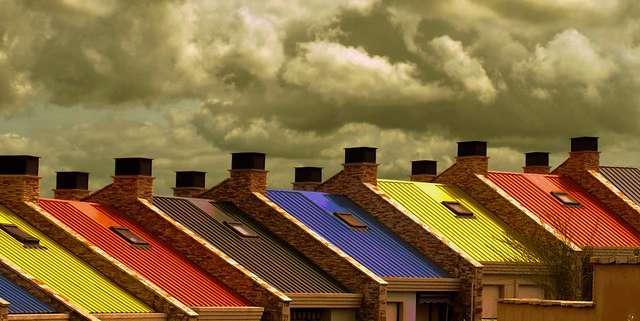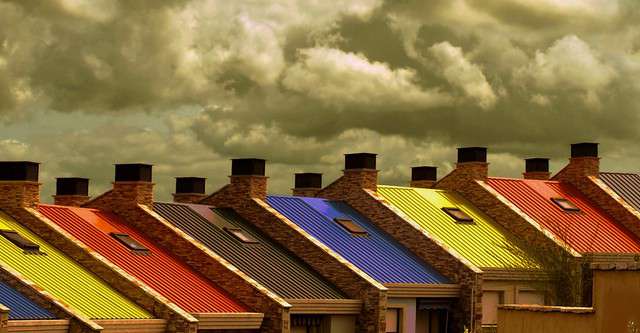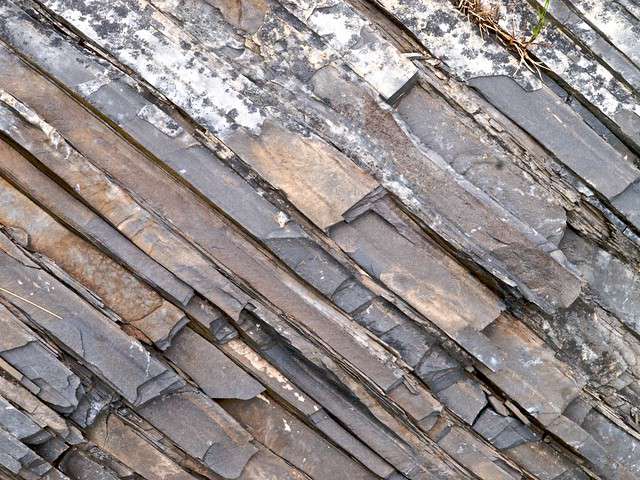
Roofing comes in many various materials and colors. Depending on your preference or the esthetic style of your home or neighborhood, these attributes can vary greatly. Many standard homes utilize granule-based composition roofing for its efficiency, durability, and cost effectiveness. New developments in color technology offer an expanded variety of shades and hues with the added benefit of improved efficiency. These new materials use color technology to improve the reflectance value of composition roofing and the various coatings applied to this material and help save on energy costs overall.

Roofing comes in a variety of materials and colors, but this rainbow of choices is not only for esthetic appeal, but can also provide energy saving benefits as well.
Image Source: Flickr user Ignorant Walking
Color technology in roofing materials continues to develop as energy saving benefits are revealed. New studies conducted by research scientists at the Lawrence Berkley National Laboratory (Berkley Lab) Environmental Energies Technology Division (EETD) use color technology to produce roofing materials that maintain cooler temperatures consistently. Traditionally, commercial buildings use a white or lighter-coating material in their flat-roof designs to increase solar reflectance. Color technology has proven that these lighter shades reflect more of the sun’s energy, keeping surface temperatures down and lowering energy costs.
However, these lighter shades are not always desired by the average homeowner or may not even be an option based on the overall color scheme of a typical residential area. Therefore, building material engineers are working together using color to design materials and coatings in granule-based composition roofing shingles. This technology utilizes spectrophotometers to measure light reflectance values as well as maintaining color consistency in these materials.



